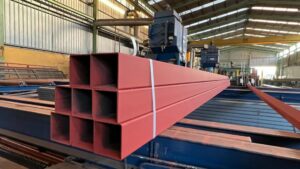
Global finished steel demand is forecast to fall 6.4% in 2020 due to the COVID-19 pandemic and rebound by 3.8% in 2021, the World Steel Association’s Director of Economic Studies Nae Hee Han told the Southeast Asia Iron and Steel Institute e-conference June 30.
Demand for finished steel globally was seen falling to 1,653.9 million mt in 2020 from 1,766.5 million mt in 2019, before recovering to 1,717.4 million tons in 2021, Han said.
“In this minus 6.4%, we have some growth from China, around 1%, so the picture of the rest of the world is not actually as beautiful as 6.4%, it is more likely minus 14%,” she added.
Developed counties will be more deeply impacted than emerging and developing economies by the pandemic, and India’s domestic market more affected than China’s, she said.
However, China’s role as a crisis buffer has been reduced compared with the global financial crisis 11 years ago, she said, adding the impact of the global pandemic on GDP was already greater than during the global financial crisis due to the lockdowns in multiple countries. While China’s steel market recorded a 23.4% growth rate after the global financial crisis in 2009, only 1% growth in demand was forecast in 2020, she noted.
The automotive sector was among the hardest hit both during the global financial crisis and the COVID-19 pandemic. It is forecast to contract 19.6% year on year in 2020, compared with a 23.8% on year decline in 2009, while mechanical machinery was forecast to fall 11.7% in 2020, in line with 11.7% in 2009, according to World Steel Association research.
Disruptions to value chains will also ripple through other industries, many of which will struggle to recover while social distancing measures remain necessary, she said. “We do not think the recovery of demand will be strong, as with high unemployment there is more cautious consumption,” she added.
Small and medium industries in particular are at risk of bankruptcy as social distancing will be difficult to maintain, she said.
The restoration of confidence will depend on a discovery of a vaccine or cure, she said. In the meantime, the experience of lockdown could prompt societal changes, such as movement from highly urbanized centers to lower-density rural locations impacting transportation, urbanization and investment.
While automobile use plunged during lockdowns, the increasing preference for private vehicles over public transport as restrictions ease is also likely to result in structural transformation that will impact steel markets in years to come, she added.
— Analyst Chelsea Ye




